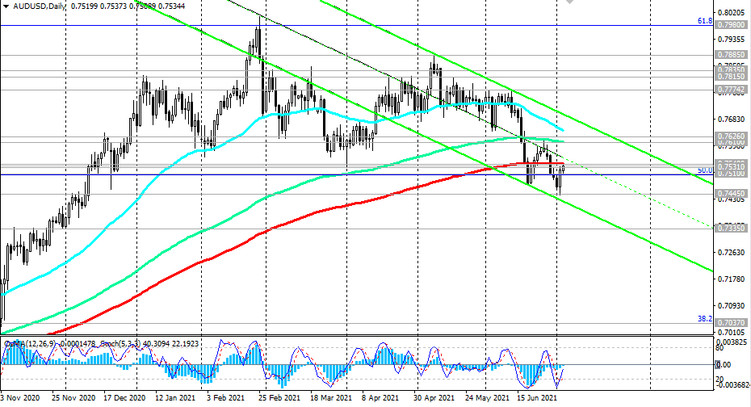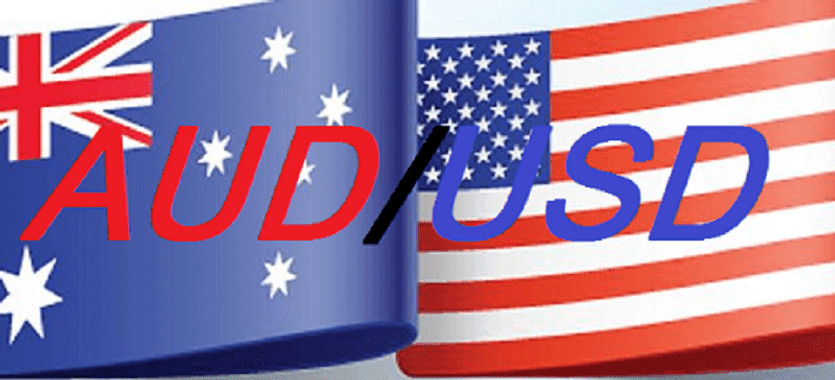The DXY dollar index closed last week with a gain of +0.6%. The dollar rose immediately after the publication on Friday of data provided by the US Department of Labor, according to which the number of jobs in June increased by 850,000. The data for May was revised upward from +559,000 to +583,000. However, the unemployment rate unexpectedly rose to 5.9% from 5.8% in May. Economists had forecast 706,000 job growth and 5.6% unemployment. The DXY dollar index first rose to 92.75 from 92.65, but then fell to 92.45, ending Friday with a decline, but still with an increase last week.
The positive dynamics of the NFP indicator affected, first of all, on the US stock market: the American stock indices S&P 500 and NASDAQ100 finished last week at new record highs. Job growth was the highest since August last year and surpassed economists' forecasts. The dollar is also in demand again as a defensive asset amid the worldwide spread of a new delta strain of coronavirus.
However, at the start of the new week, the DXY dollar index declines. As of this writing, the DXY futures are traded at 92.15, 60 pips below its high hit last Friday after the NFP was posted. Data from the US Department of Labor show that hiring is accelerating as the economy continues to open. However, these data do not signal that the Fed is faced with the need to start curtailing its stimulus policy in the near future. Unemployment in the US, as it was expected, fell to 5.6% in June from 5.8%, but it, on the contrary, rose to 5.9%.
Thus, it is still premature to talk about the final breakdown of the dollar's downward dynamics, although it is also not worth talking about its deeper decline.
Fed Chairman Jerome Powell, speaking at the end of June in Congress, reiterated that the first priority of the Fed is to support the American economy and labor market, which are badly affected by the pandemic. The Fed will not rush to tighten monetary policy, relying on inflation alone, and only with the cumulative dynamics of these indicators (inflation growth and maximum recovery of the labor market) can begin to change the parameters of monetary policy, Powell said.
Nevertheless, inflation, which has shown record growth rates over the past 29 years, will sooner or later force the Fed to start considering the issue of curtailing its stimulating policy.
Macro data coming from the US, which indicates a significant acceleration of the US economic recovery, strengthens market participants' optimism about the outlook for the dollar. It is also receiving support from Joe Biden's new plan to modernize US infrastructure, approved by the US Congress last month, which will require nearly $ 600 billion in new spending, and from growing concerns about the worsening epidemiological situation in Asia and Europe due to rising incidence of new delta strain COVID-19.
Today, US financial markets are closed for Independence Day, and no important macro statistics are scheduled for the afternoon of the trading day either.
Among the upcoming events that may increase volatility, attention should be paid to tomorrow's RBA meeting on monetary policy issues.
At its June meeting, the Australian Central Bank decided to keep the key interest rate and the target level of yield on 3-year government bonds at a record low of 0.10%. In the accompanying comments, it was said that the Central Bank would not raise the rate until the actual inflation is stable in the range of 2% -3%, which is unlikely to happen before 2024, and in July the bank will consider the issue of further purchases of bonds. Meanwhile, some economists expect the RBA to undertake an A $ 50 billion asset purchase program over the next six months (up from the current A $ 100 billion monthly purchase volume). In fact, this is the beginning of the curtailment of the stimulating policy. If the RBA really decides at its July meeting to reduce the volume of purchases on the national bond market, this will mean a reduction in liquidity and a strengthening of the Australian dollar.

The Australian dollar and the pair AUD / USD, which is traded near 0.7535 mark at the time of this publication, rallied earlier this week, supported by the weakening US dollar and rising commodity prices. The price of WTI Crude Oil rose 1.2% last week, while Brent rose to $ 76.24. Last week, OPEC and its allies failed to agree on the terms of production increases. OPEC+ talks will continue today. Gold, which dropped to $ 1751.00 per troy ounce, bounced back at the close of the week and stopped at 1787.00, and today the XAU / USD pair continues to gradually develop upward dynamics, strengthening towards the resistance level of 1807.00.
The RBA's decision on the interest rate will be published on Tuesday at 04:30 (GMT), and at 06:00 the speech of the head of the RBA, Philip Lowe, will begin, who will assess the current situation in the Australian economy and comment on the bank's decision on monetary policy.
Any signals from him regarding a change in the RBA's monetary policy plans will cause a sharp increase in volatility in the AUD quotes and on the Australian stock market.





